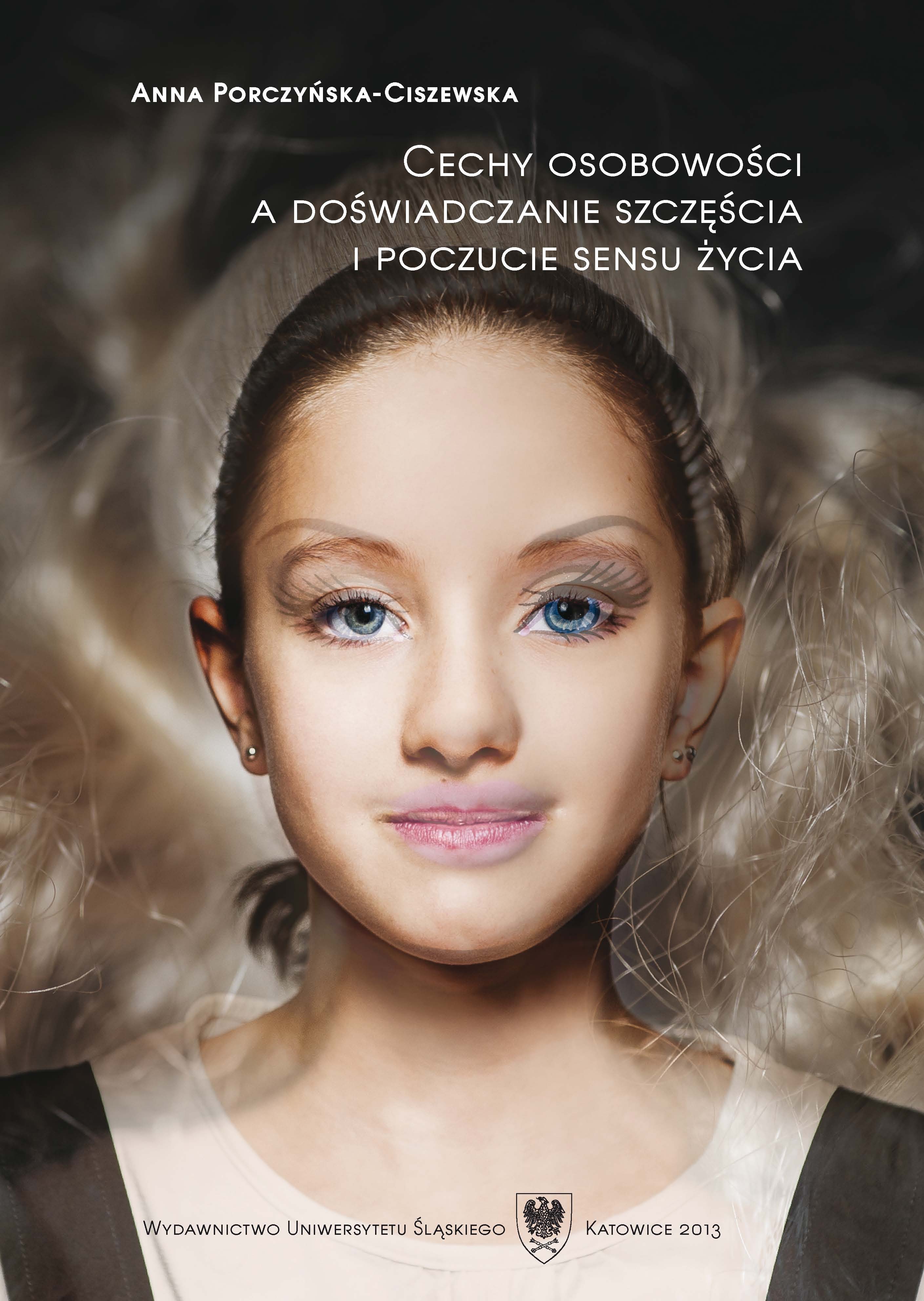Cechy osobowości a doświadczanie szczęścia i poczucie sensu życia
Personality traits versus the experience of happiness and sense of life
Author(s): Anna Porczyńska-Ciszewska
Subject(s): Social Sciences, Psychology
Published by: Wydawnictwo Uniwersytetu Śląskiego
Keywords: personality traits; experience of happiness; sense of life
Summary/Abstract: Both defining what happiness is and what gives sense to human existence is notan easy task. It is so as the very notions are ambiguous and impossible to defineclear-cut since each of us may understand the nature of happiness and sense of lifein a bit different way. The literature offers many conceptions and ways of defininghappiness that is why speaking of happiness one should bear in mind the multiplicityof this term, and differentiate between different types of happiness. However, inspite of the existing differences, there is one thing they have in common, namely,all of them mean something positive and valuable.For the purposes of the studies in question, the leading conception of happinesswas that of M. Csikszentmihalyi who conceived of it as the „flow experience conception”(in Polish translation, the very term is called „koncepcja przepływu”,„koncepcja zaangażowania” or „teoria optymalnego doświadczenia”). The theory byM. Csikezentmihalyi was based on the flow conception, that is, the state in whicha person is so much engaged in his/her task that nothing else matters. The very experienceis satisfactory to such an extent that people aim at repeating it, even atgreat cost, only because of their willingness to experience this pure satisfaction.The studies conducted and presented in the publication constitute an attempt todefine the subject determiners of individual differences within the scope of the frequencyof happiness experienced, defining a mental well-being of an individual,and their relationship with the sense of existence as felt by the subject.The studies under investigation aimed at recognizing the relationship betweenthe level of happiness experienced (as understood by the flow conception) and thesense of one’s own existence.The research included 208 subjects of different sex. They completed a battery ofself-describing questionnaires. The data collected allowed for including such variablesinto the analysis as the sense of life, locus of control (LOC), tendency for reactionsaccording to the A behavior model, taking risky actions, and personality traitstaken from the so called big 5 model, notably, extroversion, neuroticism, opennessfor experience, conscientiousness, and tendency to compromise whose influence onthe experience of happiness was measured statistically in the form of correlationand prediction.The results seem to prove the correctness of the assumption that each person ischaracterized by a certain level of the sense of their own life that conditions thelevel of their mental well-being understood as happiness. It was claimed that thesense of life may be treated as the main factor determining individual differences interms of a mental well-being expressed by the frequency of happiness experienced,and that a high level of the sense of life most strongly correlates in a positive waywith extroversion and conscientiousness. The experience of happiness, on the otherhand, depends not only on the sense of life, but also directly on certain subjecttraits, namely on the tendency to take risky actions, extroversion, openness for newsituations and conscientiousness. Besides, it was stated that the subject trait, that isa tendency to take risky actions, is directly connected to the frequency of happinessexperienced by an individual. The very findings proved the existence of individualdifferences in terms of the level of the sense of life experienced, and, subsequently,the frequency of happiness experienced manifested in the form of experiences ofthe flow experience type.
- E-ISBN-13: 978-83-8012-202-4
- Print-ISBN-13: 978-83-226-2156-1
- Page Count: 306
- Publication Year: 2013
- Language: Polish
- eBook-PDF
- Table of Content
- Introduction

